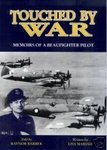Would just like to say that this shameless plug of a new book will probably annoy my bank manager - yet another item on my overdraft 
Just ordered it from Amazon - well, I'll read anything with Beaufighter in the title
BTW, a chap on another forum was asking after KW197 so I plugged your book to him as well. Do I get some of the royalties on that sale?
Just ordered it from Amazon - well, I'll read anything with Beaufighter in the title
BTW, a chap on another forum was asking after KW197 so I plugged your book to him as well. Do I get some of the royalties on that sale?

